Flat Roof Coating Contractors in Sugar Land, TX
Sugar Land Roofing is a leading provider of flat roof coatings for homes and businesses in Greater Houston.
What is Flat Roof Coating?
It is a specialized layer applied to rooftops to enhance their durability and performance. This protective barrier not only safeguards the roof from the damaging effects of weather and external factors but also aids in improving a building’s energy efficiency by reflecting harmful UV rays and regulating temperature. Moreover, these coatings often enhance the visual appeal of rooftops, making them a blend of functionality and aesthetic enrichment. A flat roof coating isn’t merely a protective layer; it’s a comprehensive upgrade for any rooftop.
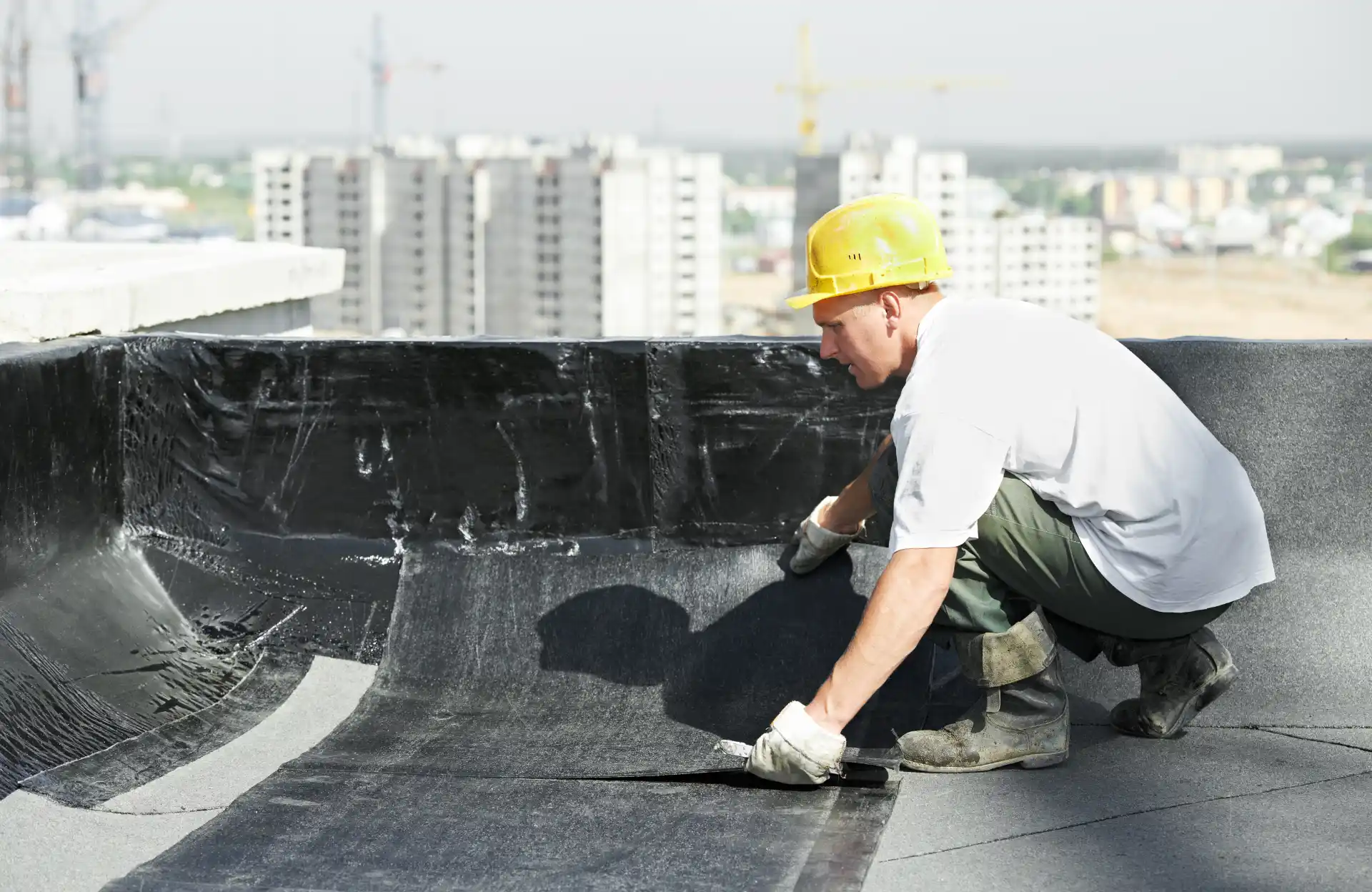
Composition of Flat Roof Coatings
Diving deep into the world of coatings for flat roof, it’s evident that their potency is rooted in their unique composition. Let’s deconstruct these components and fathom their roles:
✓ Binders: Binders are the unsung heroes of roof coatings. Acting as the primary component, they play a pivotal role in providing the essential characteristics to the coating. It’s the binders that impart the coating with the ability to flex, move, and adhere to the surface. A good binder ensures that the coating remains intact through varying temperatures and conditions, making it the cornerstone of durability.
✓ Solvents: Ever wondered about the consistency of roof coatings? That’s where solvents come in. These components determine the fluidity or viscosity of the coating. Depending on the desired thickness or ease of application, solvents can be adjusted. Once the coating is applied, these solvents evaporate, leaving behind the solid protective layer.
✓ Reinforcing Fillers: Think of these as the backbone of the coating. Reinforcing fillers ensure the coating has the required strength to withstand external pressures. From foot traffic to falling debris, these fillers fortify the coating, making certain it doesn’t crack or cave under stress.
✓ Pigments: Beyond the structural aspects, aesthetics, and functionality, also play a role in roof coatings. Pigments are responsible for this. They impart the desired color to the coating, ensuring it complements the aesthetics of the building. Additionally, certain pigments can enhance the coating’s ability to reflect sunlight, adding an energy-efficient dimension to its list of advantages.
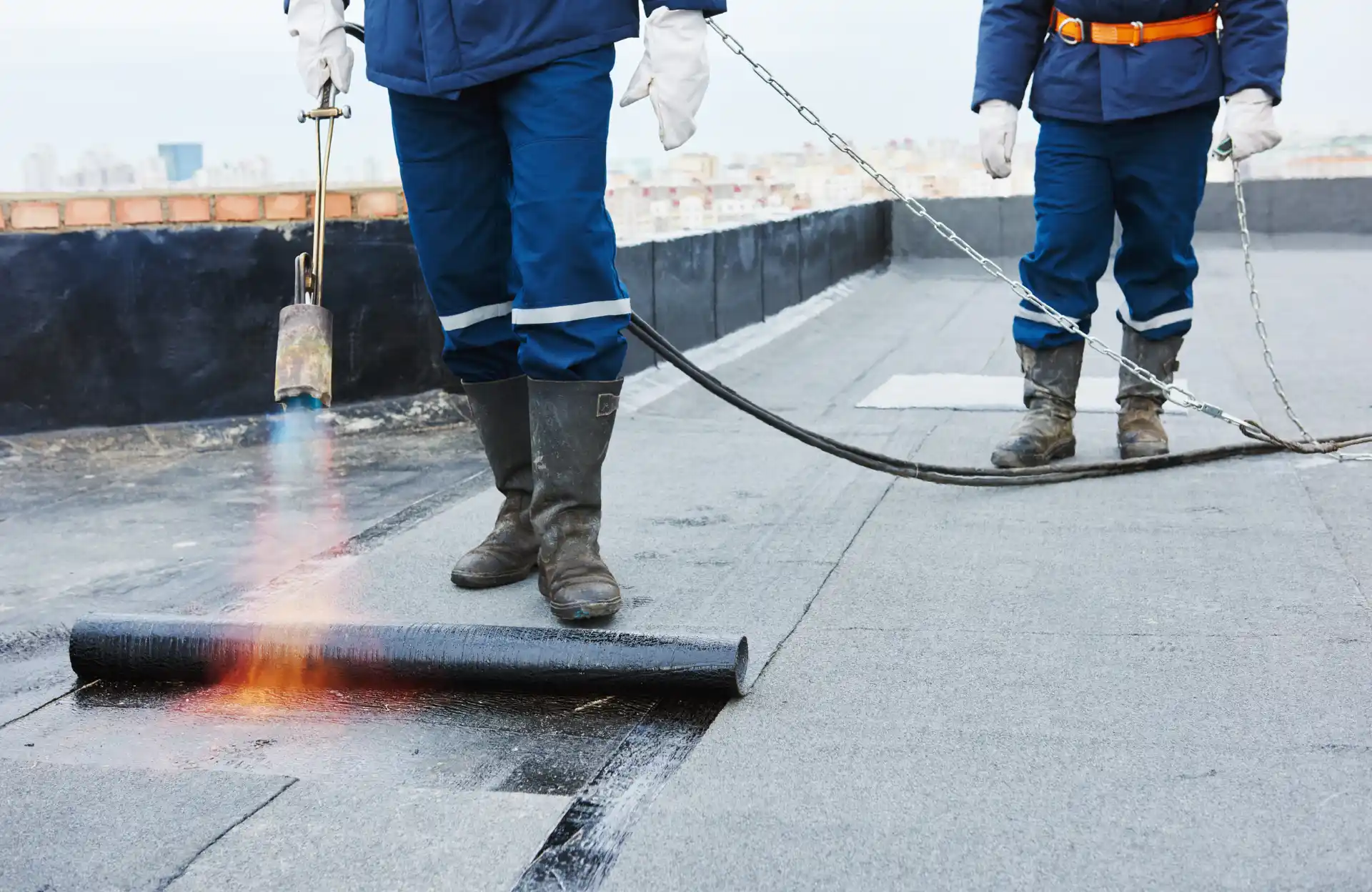
Types of Flat Roof Coating
In the realm of roofing, one size does not fit all. Given the varied challenges posed by different environments, it’s crucial to have specialized solutions. Delving into the types of roof coatings, we find each has its niche:
Acrylic Coatings
Acrylic coatings are the sun-blockers of the roofing world. Particularly suited to areas that experience high levels of sunshine, these coatings are formulated with a keen emphasis on environmental responsibility. Their primary strength lies in their UV resistance, which not only guards the roof against sun damage but also helps in mitigating heat buildup. The result? Cooler interiors without an over-reliance on air conditioning, thereby fostering energy efficiency.
Silicone Coatings
Where water is the concern, silicone roof coating rise to the challenge. Roofs, especially flat ones, in regions with heavy rainfall often suffer from ponding – the accumulation of water in puddles. Silicone roof coatings are specially crafted to combat this, offering unparalleled resistance to water and preventing leaks. Silicone has a robust nature, which means they can endure for longer durations without needing reapplication, providing both protection and cost savings in the long run.
Polyurethane Coatings
In settings where roofs double up as terraces or are subjected to regular foot traffic, the demand is for strength. Enter polyurethane coatings. Renowned for their toughness, these coatings offer a dual advantage: they provide elemental protection while simultaneously resisting wear and tear from physical use. For commercial spaces or homes with rooftop patios, polyurethane coatings are a reliable pick.
Asphalt Coatings
Some classics never go out of style. Asphalt coatings have been in use for ages, and with good reason. They strike a delicate balance, offering protection against both sun and rain. Their versatility makes them apt for a range of climates, from sunny to wet. When in doubt, asphalt coatings provide a trusted and proven solution.
In summary, the world of roof coatings is diverse, each type designed with precision to address specific challenges. Whether it’s the sun’s fierce rays, incessant rain, regular footfalls, or a mix of factors, there’s a coating tailored to safeguard against it, ensuring roofs remain robust and resilient.
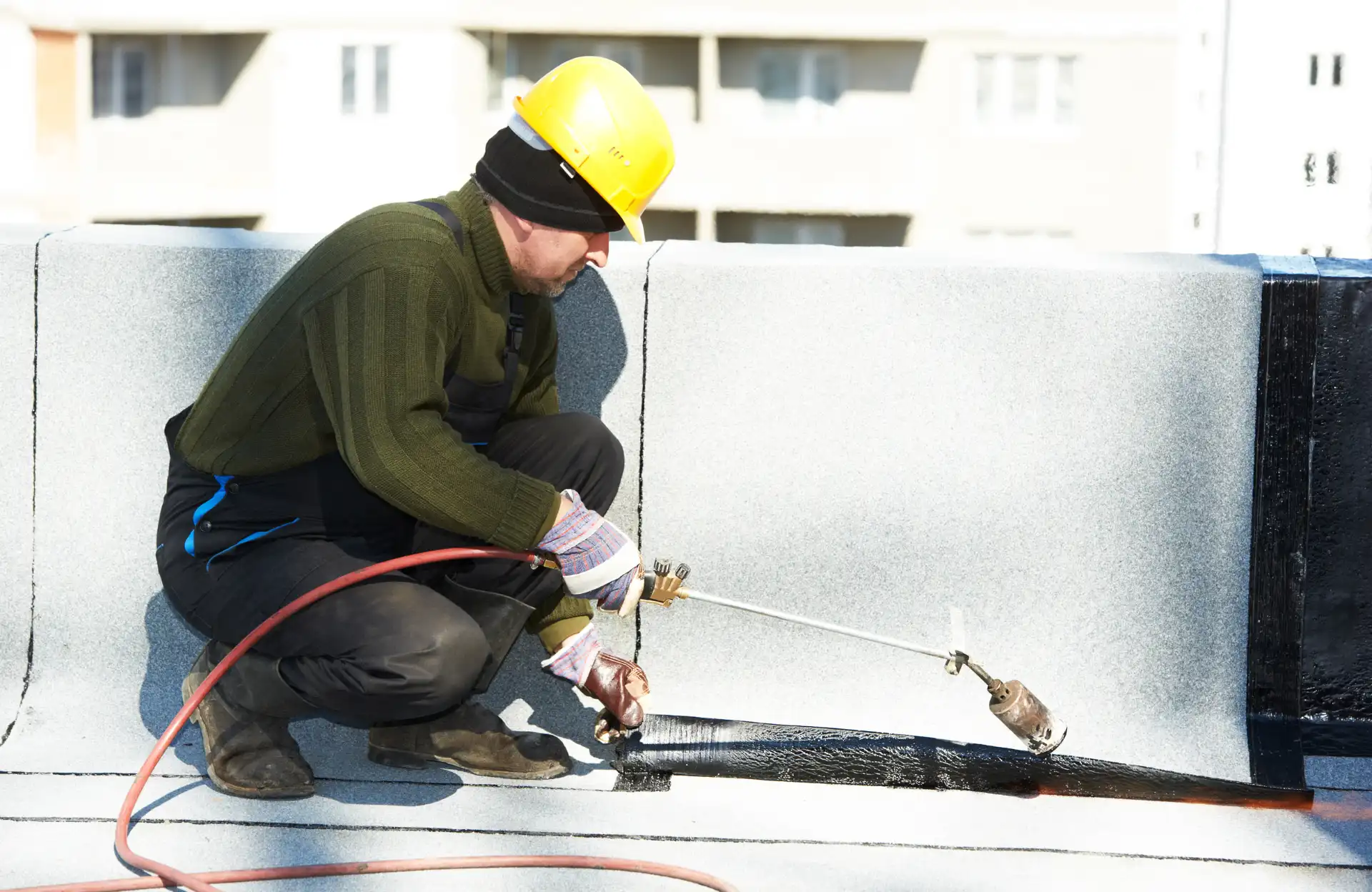
Benefits of Flat Roof Coating
The evolution of architectural practices has broadened our understanding of roofs. They aren’t just overhead shelters anymore; they play a pivotal role in the longevity and efficiency of a structure. When we talk about flat roof coatings, the benefits are manifold and reach well beyond the immediate shield they provide:
Extend and Restore Your Roof’s Longevity and Condition
Our roofs are the unsung heroes, taking on the relentless sun, unforgiving rain, and at times, the burden of footsteps. Over time, these factors can deteriorate a roof’s condition, causing it to age prematurely. Enter flat roof coatings. These are not mere surface treatments; they are fortifications. By guarding against harmful UV rays, resisting water penetration, and standing up to physical wear, they ensure that roofs retain their prime condition for extended periods. The result? A rooftop that ages gracefully, free from the common ailments of cracking, leaking, and erosion.
Affordable
In the pre-coating era, even minor roofing issues could set off alarm bells. A small leak or crack could necessitate intensive repairs or, worse, a complete replacement. This not only disrupted daily life but also meant significant expenses. Flat roof coatings have revolutionized this scenario. Now, many of the issues that would have been major red flags can be addressed with a simple recoat. This not only ensures roofs are always in top shape but also translates to considerable savings. When you coat, you save, both in terms of time and money.
Energy Efficient
Modern-day architecture places a heavy emphasis on green practices, and energy efficiency is at its forefront. Flat roof coatings are stellar contributors to this cause. Especially the reflective variants, which bounce back a significant portion of the sun’s rays, preventing heat buildup. What does this mean for the occupants? Cooler interiors, even during the peak of summer. This reduced dependency on air conditioning systems and fans, leading to a marked decrease in energy consumption and bills. It’s an eco-friendly approach that’s kind to both the environment and your wallet.
In essence, coating for flat roof offer a trifecta of advantages. They champion the cause of roof longevity, ensure cost-effectiveness, and pave the way for energy-efficient living. It’s an investment that pays off in multiple ways, from tangible savings to the intangible peace of mind.
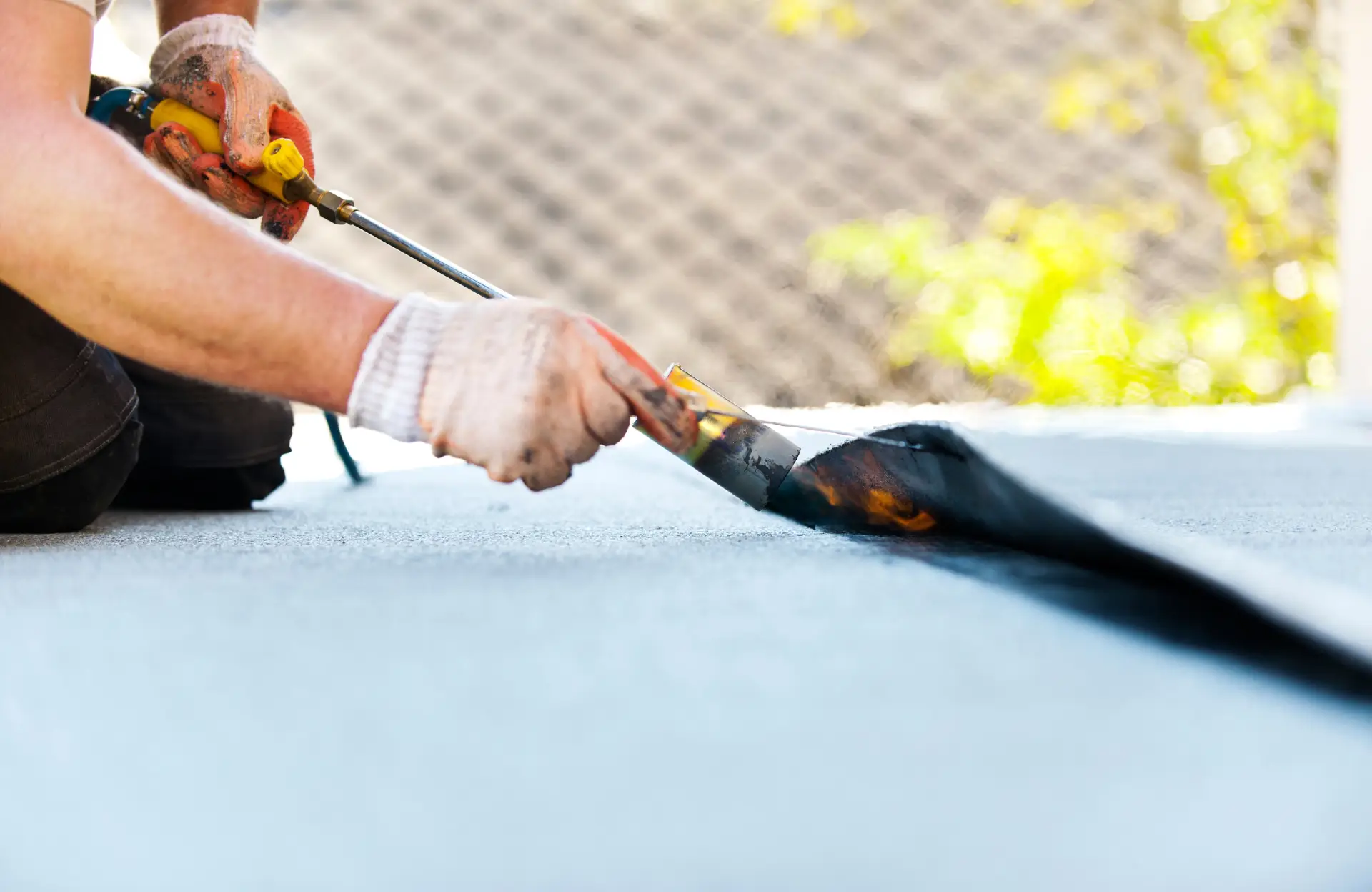
Roof Coating Process: A Step-by-Step Guide
The first step is akin to laying the foundation for a building. Proper surface preparation is integral to ensuring that the coating adheres well and offers long-lasting protection. This phase involves a thorough cleaning of the roof to remove any accumulated dirt, debris, or organic growth. Any existing loose materials or imperfections need to be addressed. This ensures that the roof surface is pristine and ready, setting the stage for a successful application.
Application
Once the surface is prepped, the actual application of the coating begins. The method of application—whether rolling, brushing, or spraying—largely depends on the product’s specifications and the size and intricacies of the roof. However, regardless of the method, the goal remains consistent: to achieve a uniform layer that offers comprehensive coverage. It’s this layer that will stand as the primary defense against external elements, so precision is key.
Maintenance Costs
While flat roof coatings are designed for durability, maintenance plays a crucial role in ensuring they remain effective over the years. Regular inspections, especially post extreme weather events, can identify potential issues before they escalate. Periodic cleaning, to rid the surface of accumulated dirt or debris, ensures the coating’s reflective properties remain optimal, thereby maximizing energy efficiency. In essence, maintenance isn’t just about preservation; it’s about optimization.
In sum, the coating process for flat roofs, when undertaken with diligence and expertise, can transform roofs from mere overhead structures to resilient barriers that safeguard against the myriad challenges of nature.
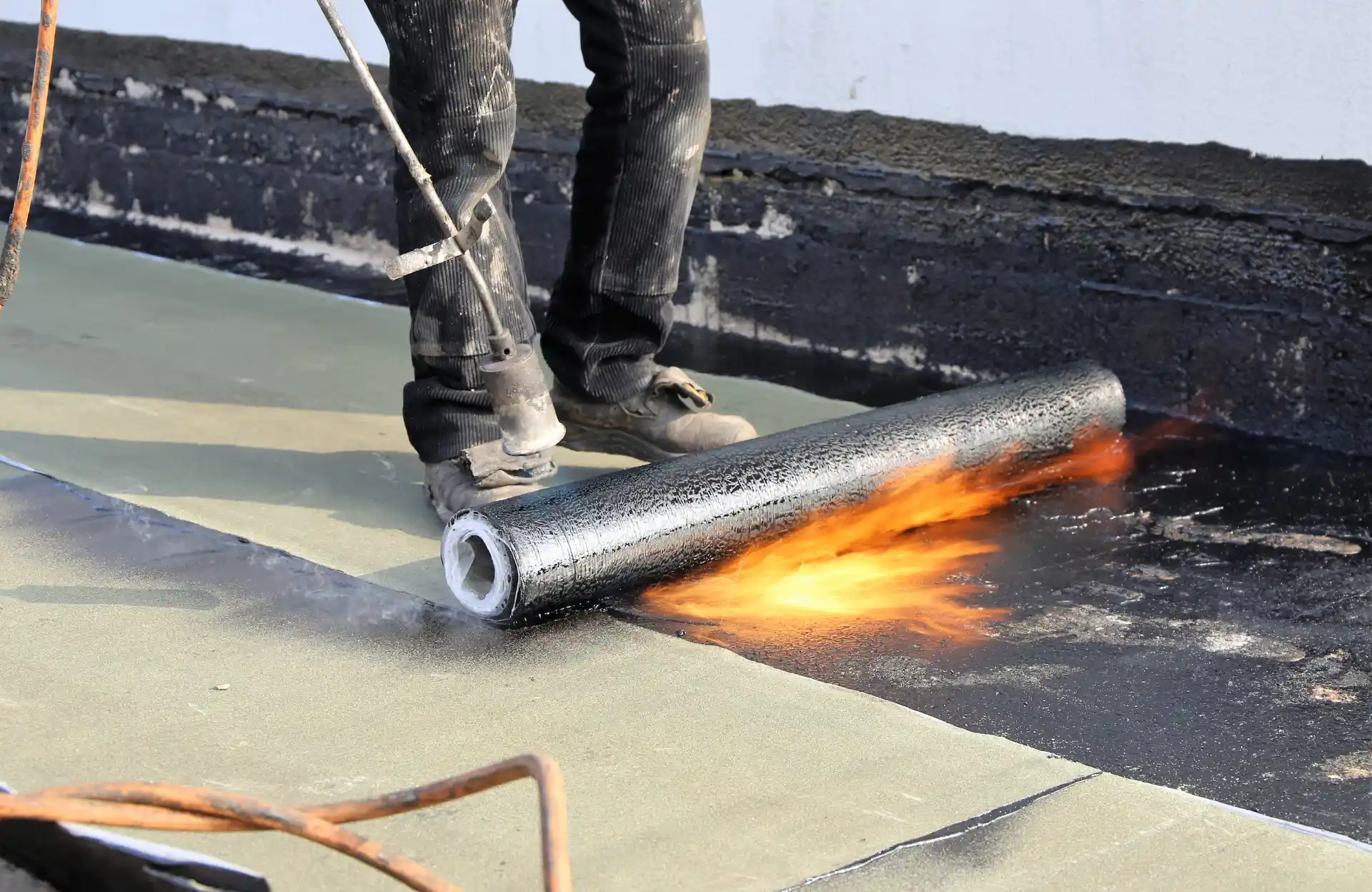
Choosing the Right Flat Roof Coating
Selecting the ideal coat for flat roofs is akin to choosing the right attire; it should suit the occasion (or in this case, the environment) and stand the test of time. Two primary factors drive this decision – the inherent properties of the coating material and the predominant climatic conditions of the location. Let’s delve deeper:
Material Considerations
✓ Silicone – Often referred to as the raincoat for roofs, silicone roof coating stands out for its unparalleled water-resistance. Ideal for regions that experience heavy rainfalls or have issues with ponding, silicone ensures that moisture doesn’t seep in, safeguarding the roof’s structural integrity.
✓ Acrylic – Imagine having a roof that sunbathes yet stays cool. Acrylic makes this possible. With its exceptional UV reflection capabilities, it offers a barrier against the harshness of sunlight. Particularly beneficial for sun-drenched locales, acrylic ensures that the interiors remain cooler, promoting energy efficiency.
✓ Polyurethane – Think of this as the armor-clad protector. Tailored for durability, polyurethane is the go-to choice for roofs that endure foot traffic or are exposed to mechanical stresses. It not only resists wear and tear but also offers robust elemental protection.
✓ Asphalt – The jack of all trades in the roof coating world, asphalt offers a harmonious blend of protection attributes. Whether it’s UV rays or showers, asphalt stands resilient, making it a versatile choice suited for varied climates.
Climate Considerations
Every climate has its unique challenges, and when it comes to roofing, these climatic intricacies play a pivotal role in determining the ideal protective shield. Let’s explore how specific coatings rise to the occasion, depending on the climatic backdrop:
✓ Hot and Dry – Think of areas where the sun bears down relentlessly, turning roofs into scorching surfaces. In such terrains, it’s not just about protection but also reflection. Acrylic coatings, with their stellar UV reflection capabilities, emerge as saviors. They deflect a significant amount of sunlight, ensuring the roof doesn’t turn into a heat sink. This translates to cooler interiors and, by extension, a reduced reliance on cooling systems.
✓ Cold Climate – In regions where winter’s chill is accentuated by snow and sleet, roofs require a coating that can endure the cold’s harshness while providing insulation. Polyurethane coatings rise to this challenge. Their robust composition ensures they remain unaffected by snow and sleet accumulations, and their inherent insulation properties mean that interiors stay warmer, optimizing energy consumption during colder months.
✓ Wet Climate – For areas where rain is a frequent visitor, or where humidity levels often soar, roofs face the continual threat of moisture ingress. This is where silicone roof coating showcase their prowess. Renowned for their exceptional water-resistance, they create an impervious barrier that prevents water penetration, warding off potential issues like mold, rot, and structural damage.
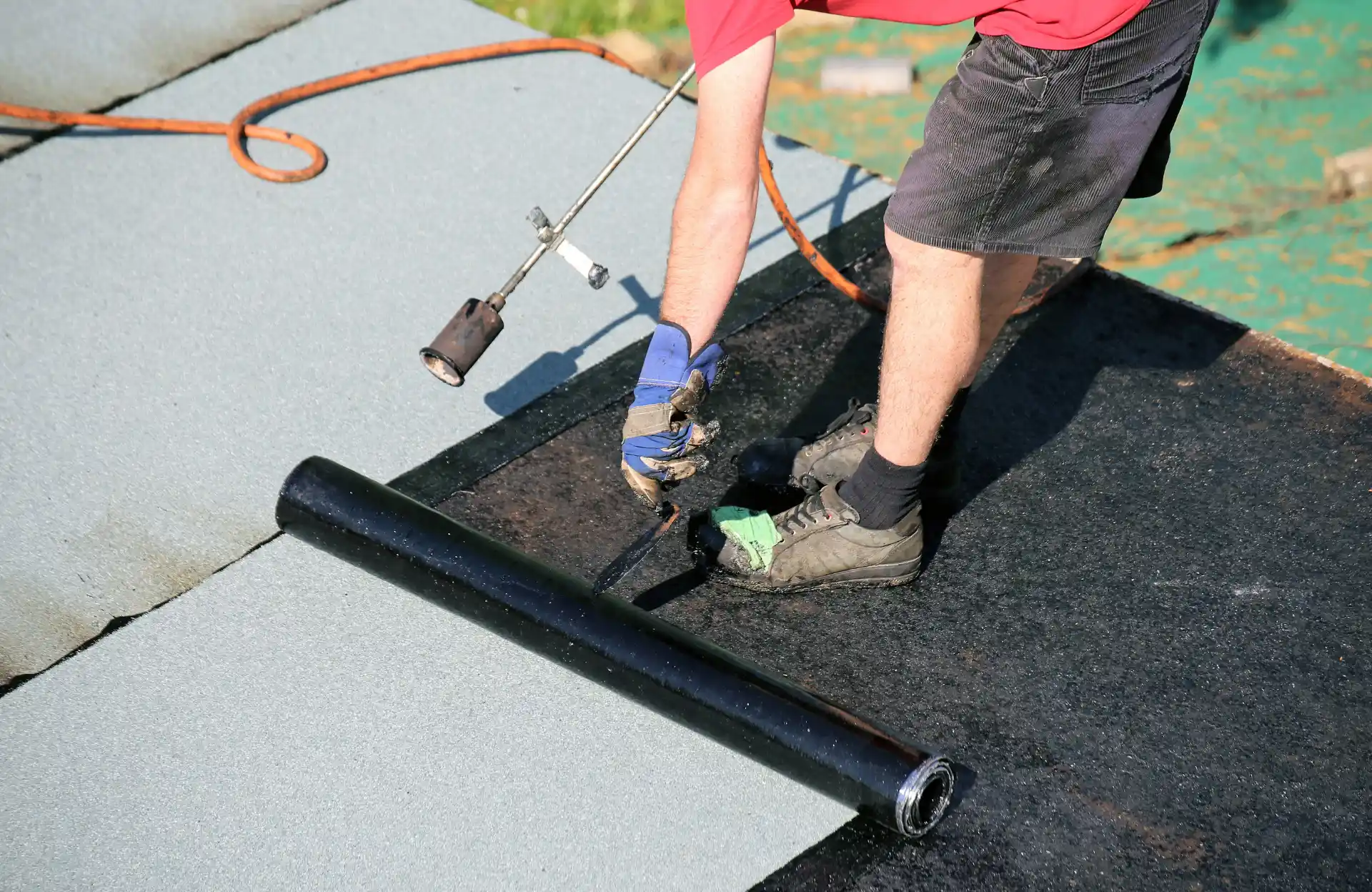
Cost of Flat Roof Coating
Venturing into the world of flat roof coatings, one quickly realizes it’s more an investment than an expenditure. The initial costs might give some pause, but when viewed through the lens of long-term benefits and savings, the picture becomes clearer and more compelling.
✓ Material Cost – The foundation of any roof coating project, the choice of material, is influenced by factors like its type, brand, and inherent quality. While it’s tempting to gravitate towards more budget-friendly options, one must consider the adage, “You get what you pay for.” Premium coatings might command a higher price tag, but they bring to the table superior performance and durability. This translates to fewer recoats and repairs over time, yielding savings in the long run.
✓ Labor Cost – Labor, in the realm of coating for roofs, isn’t just about manpower but expertise. The cost here is often shaped by regional wage standards, the intricacies of the roof in question, and its overall size. However, it’s essential to recognize that skimping on skilled labor can lead to subpar application, potentially undermining the benefits of even the best coating materials. Thus, investing in expert application ensures that the coating serves its intended purpose, safeguarding the roof for years to come.
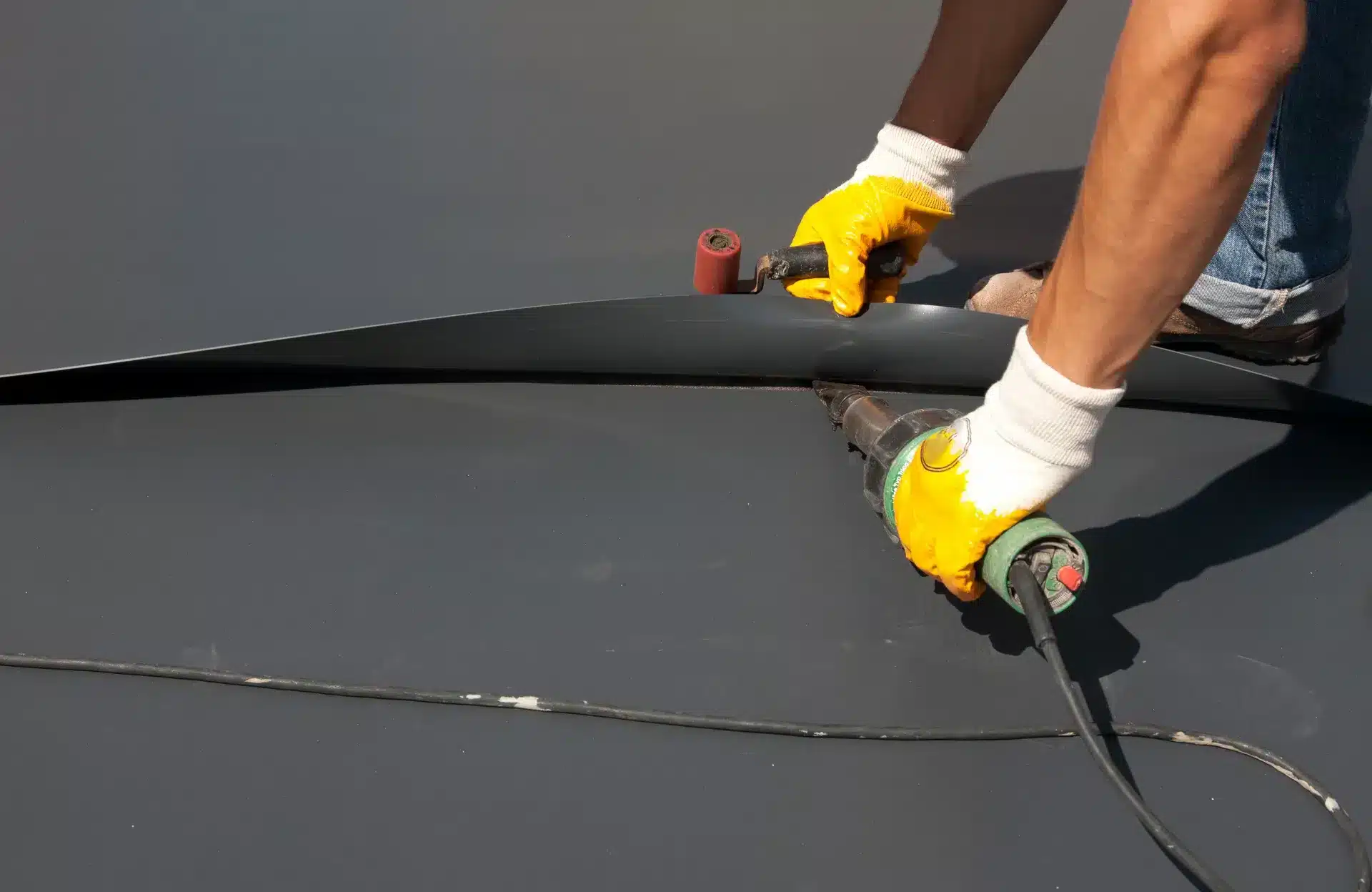
Conclusion
Flat roof coatings are not just an upgrade; they are an investment. In a world that’s rapidly urbanizing, where every square foot matters, ensuring the longevity and efficiency of roofs is paramount. Beyond mere protection, they pledge savings, both energy and monetary, making them indispensable in modern construction.
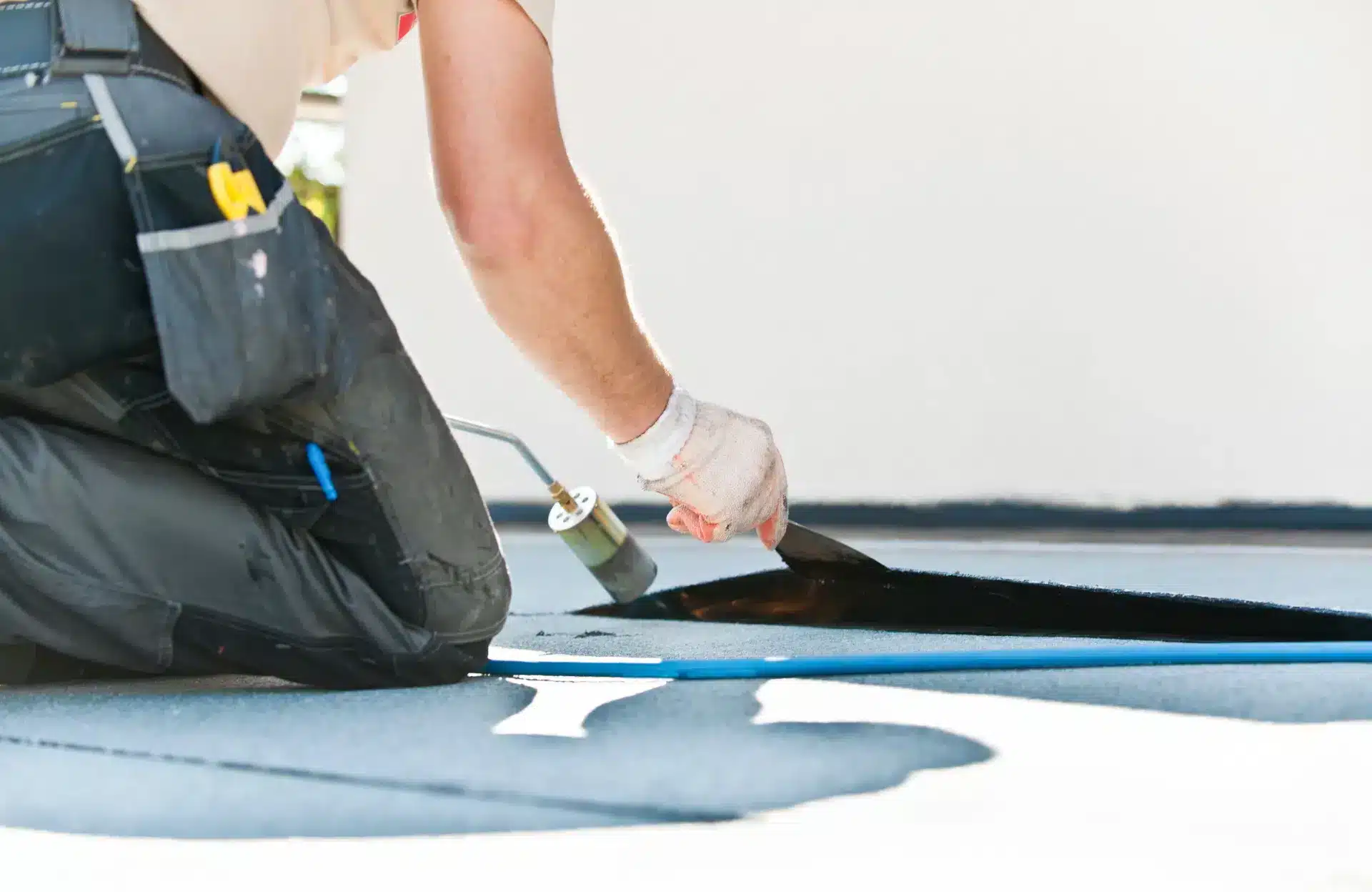
Frequently Asked Questions
What is the best type of coating for a flat roof?
Choosing the best coating for a flat roof hinges on various factors, including the roof's material, the prevailing climate, expected foot traffic, and specific needs like energy efficiency or water resistance. However, when we talk about general efficacy and versatility across different conditions, here's a breakdown:
✓ Silicone Coating - These are particularly favored for areas prone to ponding water or high humidity. Silicone roof coating is inherently water-resistant and doesn't degrade as quickly as other materials in consistently wet conditions. Additionally, it retains flexibility at varying temperatures, making it less prone to cracking.
✓ Acrylic Coating - Best for regions with intense sunlight, acrylic coatings are UV-resistant and reflect more sunlight than they absorb, which can help cool down buildings. They're eco-friendly and adhere well to a variety of substrates. However, they might degrade faster in areas with frequent ponding.
✓ Polyurethane Coating - Polyurethane might be the go-to if your roof sees more foot traffic, perhaps due to HVAC systems or other utilities. It's more durable and resistant to physical abrasions and damages than the other coatings. There are two main types: aromatic (cheaper but less UV stable) and aliphatic (UV stable and retains its color better).
✓Asphalt Coating - Asphalt coatings can be helpful for a more balanced protection profile. They provide decent UV protection and are also durable against minor physical damage.
How often should a flat roof be recoated?
The frequency with which a flat roof should be recoated depends on various factors. However, as a general guideline, here's what you should consider:
Type of Coating - Different coatings have distinct lifespans. For instance:
✓ Silicone Coating - silicone roof coating typically lasts 10 to 15 years before needing a recoat, depending on the wear and tear.
✓ Acrylic Coating - often has a 5 to 10-year lifespan, but this can be shorter in areas with extreme weather conditions.
✓ Polyurethane Coating - generally lasts around 5 to 10 years, with aliphatic (UV stable) polyurethanes tending to last longer than aromatic variants.
✓ Asphalt Coating - these usually must be refreshed every 5 to 10 years.
Roof Traffic - roofs that experience more foot traffic, either from maintenance activities, recreational use, or because of equipment housed on the roof, might need recoating sooner due to physical abrasions.
Climatic Conditions - in regions with harsh weather conditions, such as heavy rainfall, extreme sun, or frequent hail, the protective coating can wear out faster. Conversely, in mild climates, the coating might exceed its typical lifespan.
Initial Application - the quality and thickness of the initial coating application play a pivotal role. A thinly applied coating may require recoating sooner than one applied generously and evenly.
Maintenance and Care - regular roof inspections and maintenance can extend the lifespan of your coating. If minor damages or wear are addressed promptly, it can prolong the time before a full recoat is necessary.
Roof's Base Material - the type of material your flat roof is made of (e.g., EPDM, TPO, or built-up) can influence the absorption and wear of the coating, impacting the frequency of recoating.
While general timelines are associated with each coating type, it's crucial to regularly inspect the roof and consult with roofing professionals to determine the optimal recoating schedule. Annual or bi-annual inspections are a good practice to identify wear and any potential issues early on.
Which is better: silicone roof coatings or elastomeric flat roof coatings?
Silicone and elastomeric coatings (like acrylic) have unique strengths and potential downsides. Here's a comparison to help you make an informed decision:
Silicone Roof Coatings
Pros
✓ Water Resistance - Silicone coatings excel in areas prone to ponding water. They resist water absorption and degradation, making them ideal for regions with heavy rainfall or roofs with poor drainage.
✓ UV Resistance - Silicone coatings effectively reflect UV rays, which can help reduce cooling costs, especially in sun-intense areas.
✓ Durability - Silicone retains its flexibility over time, which reduces the likelihood of cracking or tearing with temperature fluctuations.
✓ Maintenance - When the time comes for a recoat, silicone can often be reapplied over itself with minimal preparation, saving time and labor.
Cons
✓ Dirt Retention - Over time, silicone coatings can become dirty, which might reduce their reflective properties.
✓ Price - Silicone is typically more expensive than elastomeric coatings, which could be a factor for large-scale projects.
Elastomeric Flat Roof Coatings
Pros
✓ Versatility - Elastomeric coatings can be used on various substrates, making them a versatile choice for many roofing systems.
✓ Reflectivity - Acrylic coatings, in particular, are known for their excellent UV reflection properties, leading to energy savings.
✓ Environmental Impact - Many elastomeric coatings are water-based, making them more eco-friendly with lower volatile organic compounds (VOCs).
✓ Cost - Typically, elastomeric coatings like acrylic are more budget-friendly compared to silicone.
Cons
✓ Ponding Water - Elastomeric coatings might not fare as well in areas of ponding water compared to silicone. Over time, water might degrade the coating.
✓Temperature Sensitivity - Elastomeric coatings might be more sensitive to temperature fluctuations, which can lead to shrinking or expansion over time.
In conclusion, the choice between silicone and elastomeric coatings should be based on the roof's specific needs, the local climate, budget, and long-term maintenance considerations. Silicone might be the way to go if pondering water is a concern. However, an elastomeric coating like acrylic could be a sound choice for broader applications with budget constraints. Always consult a roofing professional to get tailored advice for your situation.
Are there any downsides to using flat roof coatings?
While flat roof coatings offer numerous advantages, such as extending the lifespan of a roof, providing UV protection, and aiding in energy efficiency, they are not without potential drawbacks. Here are some of the downsides or challenges associated with using flat coating for roofs:
✓ Improper Application - If not applied correctly, coatings can lead to issues like blistering, ponding, or peeling. This underscores the importance of professional application.
✓ Preparation is Key - The success of a coating largely depends on the preparatory work. Any mistakes, like inadequate cleaning or failure to address existing damage, can compromise the effectiveness of the coating.
✓ Durability Concerns - some coatings might not be as durable as others. For instance, cheaper elastomeric coatings might degrade faster in extreme weather conditions.
✓ Potential for Ponding - if the roof does not have proper drainage, certain coatings, especially those not designed for ponding water, might degrade faster in pooled water areas.
✓ Recoating Requirements - while coatings extend roof life, they aren't a one-time solution. Over time, you will need to reapply them, incurring additional costs.
✓ Aesthetic Concerns - some coatings can collect dirt and debris, which can affect their appearance and, in some cases, their reflective properties.
✓ Not a Solution for Major Issues - it is not a remedy for all roof problems. Structural issues, extensive damage, or severely aged roofs might require more than just a coat.
✓ Cost - it can be more affordable than a full roof replacement, there is still a significant cost, especially for high-quality products and professional installation.
✓ Limitations with Certain Roof Types: - not all coatings are suitable for every kind of roofing material. It's essential to choose a coating compatible with the existing roof substrate.
✓ Weather Dependency - the application of roof coatings often requires specific weather conditions. It might be problematic in areas with unpredictable weather patterns, as rain, extreme temperatures, or high humidity can affect the application and curing process.
In summary, while flat roof coatings have many benefits, it's crucial to be aware of their potential downsides. Proper research, consultation with roofing professionals, and understanding the specific needs of your roof can help in maximizing the benefits while mitigating potential challenges.
What are the benefits of using liquid rubber roof coating on a flat roof?
Liquid rubber roof coating, often referred to as EPDM (ethylene propylene diene monomer) liquid rubber, offers several advantages when used on a flat roof. It has become a popular choice among property owners and contractors for various reasons:
✓ Seamless Application - one of the most significant benefits is that liquid rubber provides a seamless finish. This seamless nature ensures that there are no joints or edges that can become potential weak points over time.
✓ Waterproofing - liquid rubber offers excellent waterproofing properties. Its elasticity ensures that it won't easily crack or split, making it highly resistant to ponding water – a common issue on flat roofs.
✓ Flexibility - liquid rubber remains flexible even in varying temperatures. This elasticity ensures that the coating can expand and contract with the roof, reducing the risk of cracks and damage.
✓ UV Resistance - the coating offers protection against harmful UV rays, which can degrade roofing materials over time. This UV resistance helps prolong the roof's life and maintains the coating's effectiveness.
✓ Durability - liquid rubber coatings are known for their durability and can last for many years. This longevity reduces the need for frequent reapplications or repairs.
✓ Temperature Resistance - whether it's freezing cold or blazing hot, liquid rubber retains its properties. This makes it suitable for a wide range of climates.
✓ Cost-Efficient - while there's an upfront cost for application, the long-term savings are significant. The coating extends the roof's life, reduces maintenance costs, and can also lead to energy savings due to its reflective properties.
✓ Easy Application - compared to some other roofing solutions, liquid rubber can be relatively easy to apply. It can be rolled or sprayed onto the roof surface, reducing labor costs.
✓ Eco-friendly - many liquid rubber products are environmentally friendly. They don't emit harmful fumes during application and don't leach chemicals during rainfalls.
✓ Energy Efficiency - the reflective nature of white or light-colored liquid rubber coatings can repel sunlight and reduce heat build-up, leading to cooler interiors and reduced air conditioning costs.
✓ Chemical Resistance - liquid rubber is resistant to many chemicals, making it an excellent choice for roofs that might be exposed to chemical pollutants.
In summary, liquid rubber coating for roofs provide a versatile, durable, and cost-effective solution for flat roofs. Their myriad of benefits, from waterproofing to energy efficiency, makes them an attractive option for those looking to enhance the lifespan and performance of their roofing systems.
What is the expected lifespan of a flat roof coating?
The expected lifespan of a flat roof coating largely depends on the type of coating, the quality of the application, the environment, and the level of maintenance provided. However, a general estimation for various roof coatings' lifespans is as follows:
✓ Acrylic Coatings - these typically last between 5 to 10 years. The lifespan can be on the lower end if the roof experiences heavy foot traffic or extreme weather conditions. Regular maintenance and occasional recoating can push it towards the higher end.
✓ Silicone Coatings - silicone roof coatings are known for their durability and can last anywhere from 10 to 15 years or even longer. Their resistance to ponding water and UV rays contributes to their longevity.
✓ Polyurethane Coatings - polyurethane coatings, especially the aliphatic type, can also last 10 to 15 years, thanks to their resistance to foot traffic and mechanical abrasions.
✓ Asphalt Coatings - these generally last between 5 to 10 years, but this can vary based on the quality of the product and exposure to environmental conditions.
✓ Liquid Rubber (EPDM) Coatings - these coatings often have a lifespan of 10 to 20 years, depending on the thickness of the application and the conditions of the environment. Their inherent flexibility and durability make them a long-lasting choice for many roofs.
It's important to note the following considerations:
✓ Environment - roofs in harsh climates, with either strong UV radiation or frequent temperature fluctuations, might see a reduced lifespan for their coatings. Similarly, areas with frequent storms or heavy rainfall can also contribute to faster wear.
✓ Maintenance - regular inspections and maintenance can significantly extend a coating's lifespan. Addressing minor issues before they escalate can prevent the need for extensive repairs or early recoating.
✓ Preparation and Application - the longevity of a roof coating is also highly dependent on the quality of the initial application. Proper surface preparation, addressing any existing issues, and ensuring an even application are critical factors.
✓ Roof Traffic - roofs that experience frequent foot traffic or have heavy equipment might see faster wear of the coating.
In summary, while there are general guidelines for the expected lifespan of various coating for roof, individual experiences can vary. It's essential to consider all the influencing factors and consult with roofing professionals for an accurate estimation specific to a particular roof.
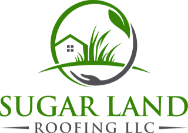
 (832) 944-7663
(832) 944-7663